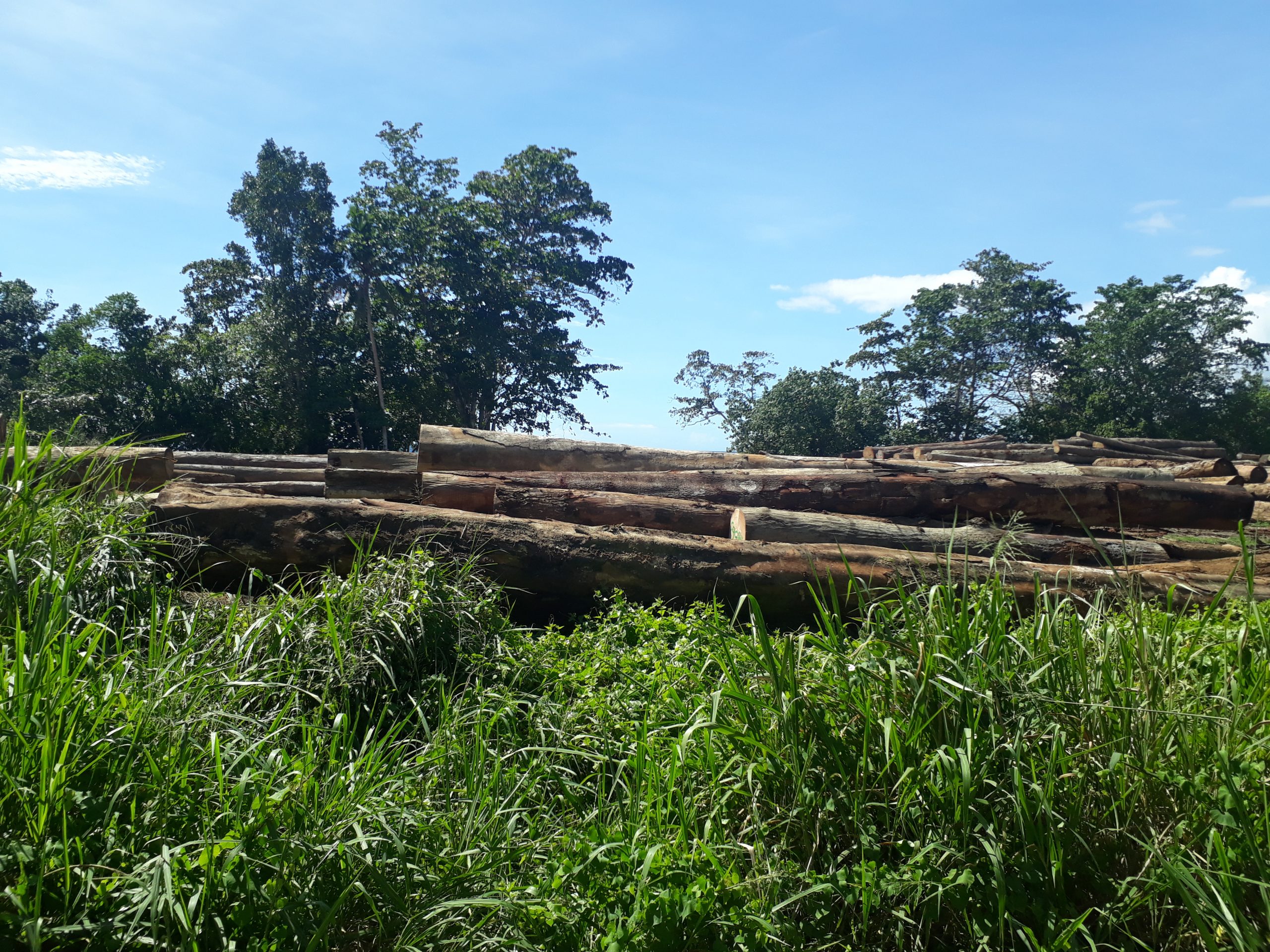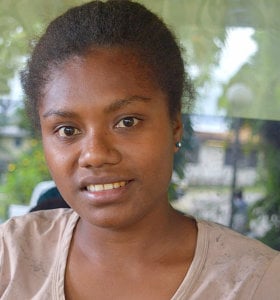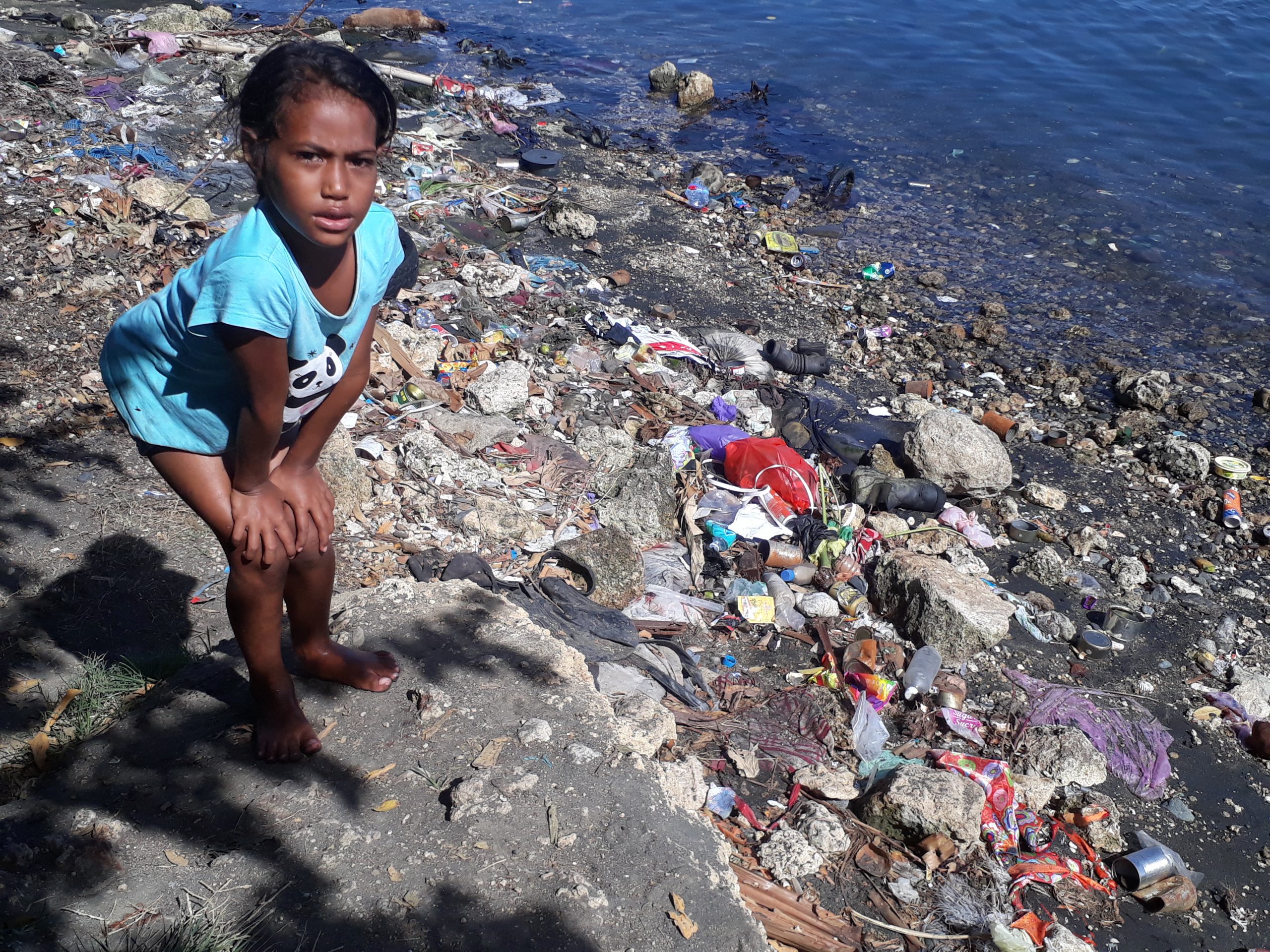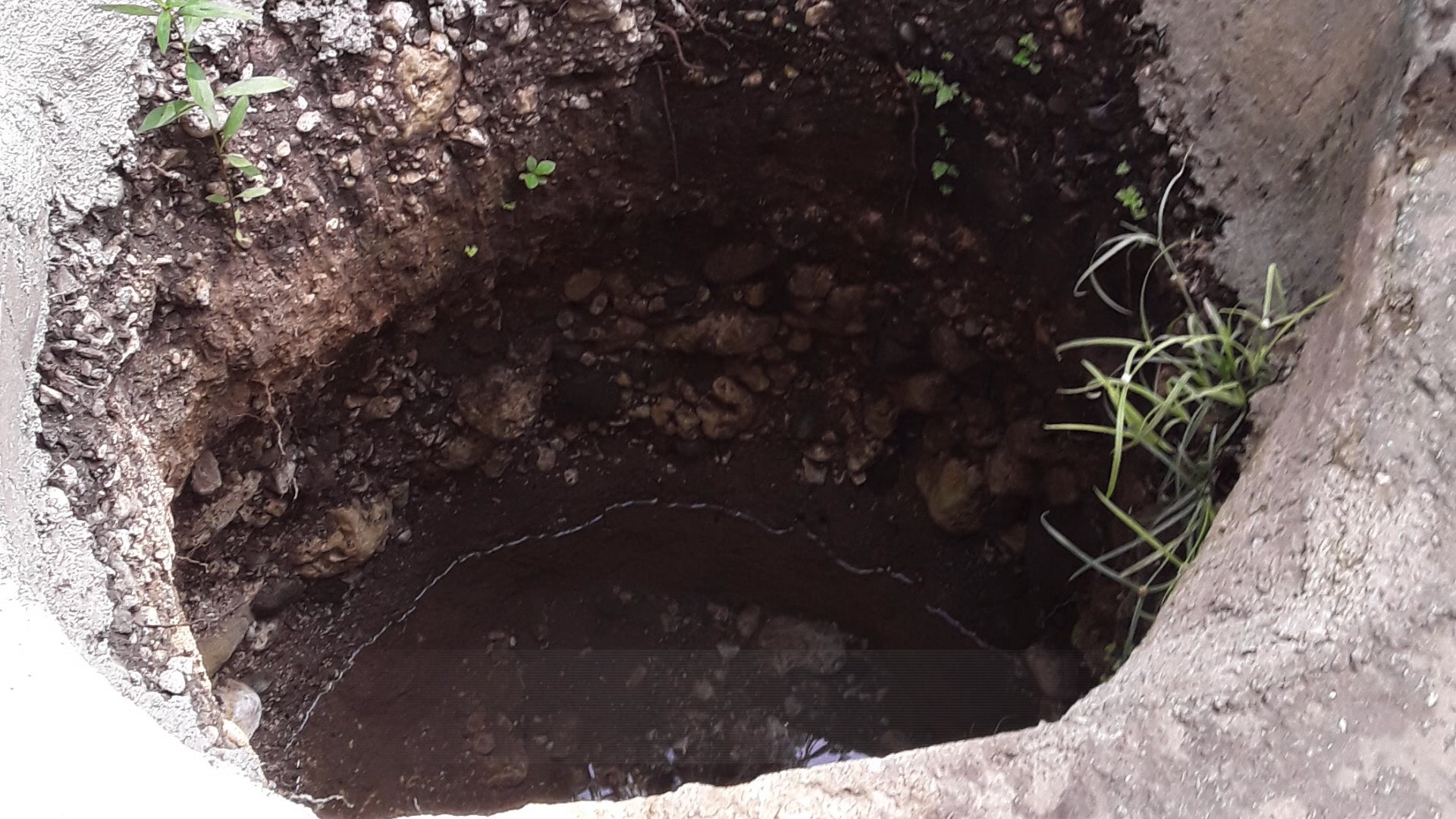“There is a particular tree that grows by the Lungga River. We call it the lania tree. I have been by the riverside and I have seen the tree. I have seen our father, even our great grannies walk alongside the Lungga River and gaze at the tree. I have been told; countless times, that breaking even the smallest part of the tree and dropping it in the river will bring rain, thunderstorms and flooding. Since childhood, we’ve been told never to cut trees by the river side.”
These were the words of the Barana community member, Justina Mane. She was speaking to Wansolwara at the launch of the Barana Community Nature Heritage Park project, including the Environment and Resilient Resource Center in July this year.
The launch at a rural community on the outskirts of Honiara, the capital of the Solomon Islands, served as an occasion to reflect on the damage caused by years of clearing trees for homes and gardens— trees once considered sacred, and recognised as integral to the Lungga river system.
The river was the lifeblood of the community — a source of clean water and food such as fish, prawns, eels and crabs. Due to the pressures of a growing population, the demands of modern society, and the lure of the dollar, traditional wisdom and knowledge were ignored, and the river’s surrounding vegetation removed to clear land.
In time, the river began to shrink noticeably. The water quality declined and the food that it provided dwindled. The community, who had always lived close to nature, were affected physically and mentally. Major concerns were over water shortage, forest clearing and deforestation such as logging and unmanaged milling on the upper Lungga and Mataniko rivers as direct threats to the village’s water sources.
For an emotional Mane, the Barana community project was a reminder not to take the environment for granted, but to treasure and nurture it in the way of their ancestors.
The environment provided physical and psychological sustenance — not only was it a source of food, but also tied up with culture and tradition.
“The times of our ancestors were different. Now there are significant changes in how we live and how we treat the environment,” Mane said.
The project was a partnership between the Barana community and the Secretariat of the Pacific Regional Environment Program (SPREP).
Under its Pacific Ecosystem-based Adaptation to Climate Change (PEBACC) project, SPREP has provided $US123,300 ($F270,738) over three years, earmarked for 5000 hectares of forest area on Mount Austin, which hosts one of the largest water catchments supplying water not only to the Barana community but to the wider Honiara city.
The Barana Community Nature Heritage Park project involves reforestation to reduce the risks of flooding, replanting the watershed areas to reduce soil erosion, identifying and implementing sustainable land-use management activities, land-use mapping, development of eco-tourism and nature-based income-generation activities.
Environment and Resilient Resource Centre
The Environment and Resilient Resource Centre, based on traditional designs, will serve as a space for creating awareness about the importance of good environmental practices and the role of ecosystems and biodiversity in community resilience.
The earmarked area includes a number of World War II viewpoints and battle sites, which makes it an important part of the heritage of greater Honiara, with potential for tourism.
“This project will help us undo some of the damage to the environment. It is encouraging to know that we can save our environment —that we can enjoy what our ancestors had enjoyed,” Mane said.
At the launch was 10-year-old Marina Mane, who represents the future generation. Her generation will face the full brunt of the environmental degradation and fallout from climate change unless actions are taken to mitigate the effects.
“My name is Marina and I am very happy that you all helped build this resilience center to plant trees for my future,” she said at the event.
Marina’s traditional attire during the opening ceremony—a grass skirt and beads made of tree bark, and shell money from sea shells—was representative of her community’s ties to their land and the marine environment.
The project aims to educate and empower the future generation as the future custodians of the environment.
Standing next to Marina was a community elder Evangeline Kuva, also donned in a grass skirt with traditional painting on her face. She indicated she had seen better days as far as their environment was concerned.
“I never thought this would happen to our community, however, I am happy that this initiative has come to my village, to help us,” she said.
Both Marina and Evangeline welcomed guests at the launch with big smiles, hugs, and looks of relief on their faces. Speaking in the local Guadalcanal dialect, their words reflected the desperation of a community feeling the impacts of their natural environment changing right before their eyes.
It is the small communities in the country that pay the highest price for a national economic base primarily sustained by the exploitation of natural resources.
The Solomon Islands’ Ministry of Environment website states that while forestry, mining, fisheries and agricultural are vital for growth, they pose a threat to biodiversity, cause pollution, and are responsible for coastal degradation.
The foreign companies engaged in such projects benefit the most while the communities suffer the impacts of a damaged environment.
Logging impact
According to a report released by the Global Witness last year titled, ‘Paradise Lost: How China can help the Solomon Islands protect its forests’, logging, while a major source of foreign exchange, has caused major environmental and social problems, as well as corruption.
The report highlighted that the rate of logging in the Solomon Islands was four times over the ‘sustainable yield’, and rife with transfer pricing, misreporting and tax avoidance.
“The economy is heavily dependent on the forestry sector, and yet the country’s forests continue to disappear fast. The Solomon Islands’ authorities are well aware that, without change, the country’s timber trade will soon slow to a trickle with nothing left to log and barely any timber to trade,” the report stated.
“The first step to prevent this from happening is to make sure that — at a very minimum — logging companies in the Solomon Islands comply with the country’s laws.”
The report said the Solomon Islands exported an astonishing 19 times more timber than was sustainable, yet despite this, the rate of logging was still increasing.
The Solomon Islands is China’s second-biggest source of tropical logs after Papua New Guinea, according to the report, despite the fact that the Solomon Islands is only twice as big as Beijing.
The report stated the Solomon Islands exported more than 3 million cubic metres of logs in 2017.
“Our estimate of sustainability is the most recent we can find, and comes from a report commissioned by the Secretariat of the Pacific Community,” the report said.
Tree planting project
The Barana community tree replanting project is seen as a push back against the system. Before the project was established, the community faced water shortages, with logging on the upper Lungga and Mataniko rivers a direct threat to the community’s major supply source.
The project aims to protect the land used for community gardening and a water catchment that supplies Honiara residents.
Barana community member and event organiser, Melinda Kii, said simple developments such as the resilient center and nature park could change lives.
“The Barana community is happy to host this milestone initiative that connects us to the national, regional and international discussions on climate change,” said Melinda.
“We are very fortunate to participate in this initiative. It gives all generations a chance to listen, learn and practice under one common global agenda — climate change.”
Kii shared an old Barana saying: tabu kavi la lania ke ta bochana visa meke rasana usa meke tambe na ovo (don’t cut that lania tree because lightning will strike, the rain will fall and the river will flood). Flooding is indeed a grim reality facing the community.
SPREP director general Kosi Latu, a guest at the event, said the project spoke of many interlinking issues in conservation, community resilience, and natural solutions such as replanting to revive river systems and the eco-system as whole.
“Improving livelihoods by providing renewable energy and a source of clean water are important for the future generations. That’s what this project is about,” he said.
“It’s not about infrastructure. It’s about going back to nature and to then traditions and practices of past generations. We’re reviving them and demonstrating their benefits.”
The Barana community nature park is the first of its kind in the Solomon Islands. It empowers the community to fight back rather than to be the victims.
The success of the project is crucial for similar parks across an archipelago facing devastation from decades of environmental degradation.




